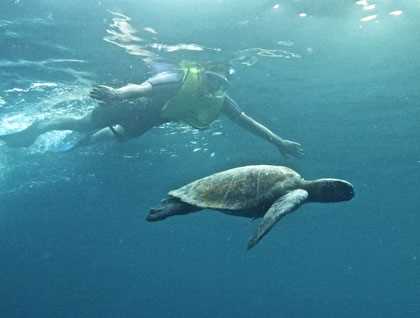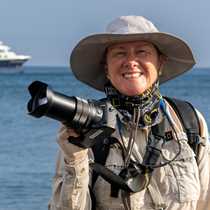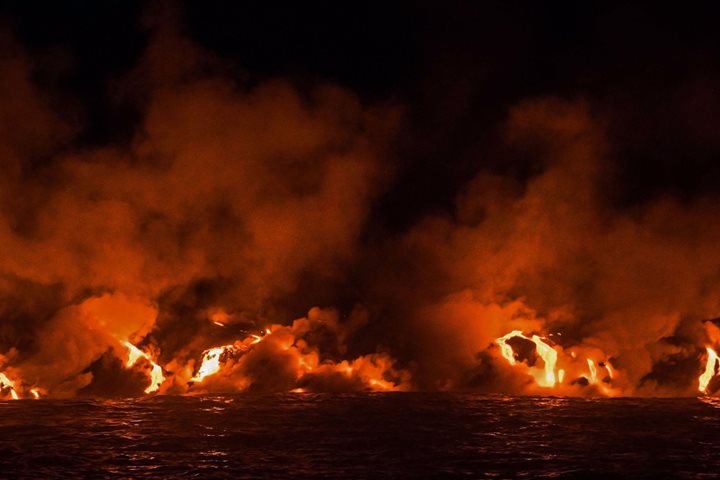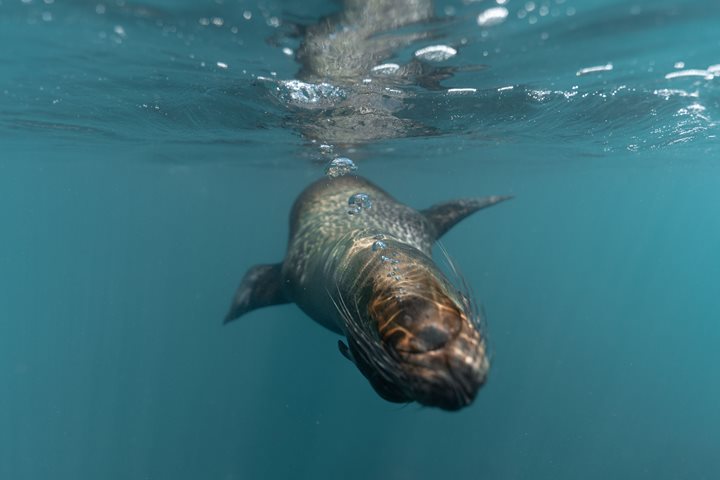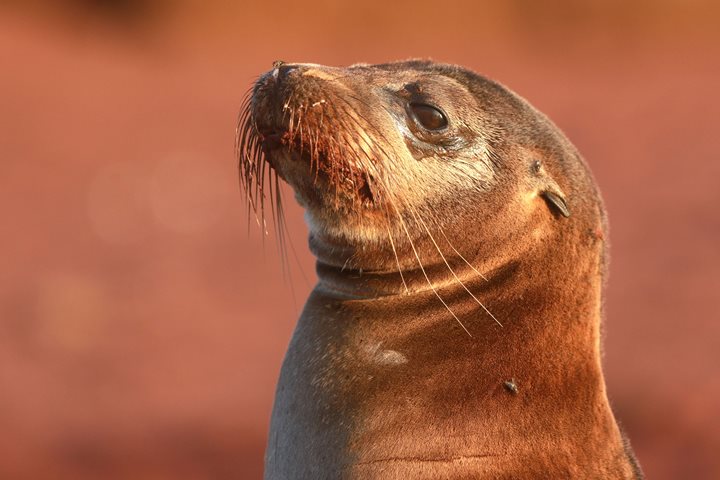The National Geographic Islander pulled up to an impressive, ragged and eroded volcanic formation called “tuff cone” just in time for the early morning light to accent the deep scars and ravines that have broken down this mountain over the last 300,000 years. Called “Punta Pitt”, it is the easternmost point of land in all the archipelago. It was the first land seen from the H.M. S. Beagle on their arrival in 1835, but also the first land seen by hundreds of sailors over the past centuries, men hungry for a sign of land after months at sea.
It is a barren landscape, however. The rains haven’t started yet, so all is dry, dusty, scrubby and arid. Not a drop of fresh water to be seen in miles. It is the oldest part of San Cristobal Island, therefore perhaps the oldest land (above water) in all the archipelago. Older islands lie below sea level, called sea mounts. The ocean covered them millennia ago during their slow march eastward, carried by the tectonic plate “Nazca” towards South America.
This morning was our last chance to add to the wildlife list some significant species: the San Cristobal lava lizard (check), the San Cristobal mockingbird (check), and the newly-discovered-genetically-distinct marine iguana, apparently ancestral to all other Galapagos marine iguanas, including those found on the same island further south (check)!
Red-footed boobies, however, were the true goal of many this morning. We found them perched in bushes along the cliff edges. By both Zodiac and foot, folks got a look at this bird which is modest from a distance, but dramatic if seen at closer range. It has a sky-blue bill with pink edging, café-au-lait brown feathers and red legs and feet. There were even some chicks were in the area!
Swimming from the olivine-tinged beach topped off the morning. Sooner than wanted though, everyone returned to the ship in order we continue our exploration of San Cristobal.
The National Geographic Islander traveled the north coast in a southerly direction until we came into view of the renowned “Kicker Rock”, or in Spanish, “Leon Dormido”. It is also a tuff cone and also eroded badly from the centuries. It lies in a dramatic location off shore surrounded by deep, deep water. The intrepid gathered their gear and dared to get into the Zodiacs for a last deep-water adventure snorkel.
And yes, indeed, we saw sharks. Black-tipped sharks for the most part which cruised serenely through the fissure created by erosion over the centuries. With a depth of only 40 to 60 feet, the channel is a safe haven for the smaller (4-5 footers) sharks. Wonderful indeed were the sightings!! Black-tipped reef sharks, in all their sinuous glory, swam below us. A little skittish because of our size (we look SO large under water), they occasionally allowed us a close view. Beautiful creatures, all.
Sunset had us circumnavigating around Leon Dormido, but a surprise event had everyone on the edge – literally! We were all hanging off the railings to watch a school of some kind of small fry (Sardines? Anchovies?), be pushed towards the surface by some larger, predator species until the surface of the ocean foamed with action. From above came the Galapagos airforce – Nazca boobies, magnificent frigate birds, great frigate birds, blue-footed boobies and Galapagos shearwaters. It was chaos.
Finally the sun did set and after our final circumnavigation we set sail for the port town of Baquerizo Moreno. However, the fun had not finished. Unbeknownst to us, the galley and hotel crew had prepared a stupendous grand finale during dessert – flaming Baked Alaska and vocals to boot!
An undefinable moment and also unforgettable. Only surrounded by friends can one have such special memories.

